#dr. andrew bristol
Explore tagged Tumblr posts
Text
against police ambulance paramedics defence army security hospitals mental health workers dr nurse perverters firefighters council workers centrelink centacare centacarefnq Juanita Sharon babalola fe Stafford Kylie Joan Moore Suzanne Lucas Katie Oliver kiyomi tanaka Jennifer at Charles gairdner hospital from Donnybrook live mastery house 1992, Louise from Bristol uni biology Silvia ratsch siobahn Donnelly IRA media tv radio u,s gb fra nor swe fin den Heathrow esp por gre ita Swiss can Kerry Davison nurse Jane, Jane Phillips, dr goel, dr ballestro, airports consulates passports, navy, ballentine McPherson devina, Gayle, Rachmaninov, paramedics , St John’s ambulance AFP, asio, yt fb x hazel Cooke Charles price Nev gray Colin hill sherry Abdul Katherine girl judge Judy Jerry max Pam Ian dadour uwa geology Gavin walshe Malcolm Fraser Paul Lester-smith nick young parachute mcfc Rawlings pakis Bharat frank rothwell Darren Doyle Joe Doyle Andy Ritchie earl Barrett Kev barret Gordon Hubert castle training pace Flavia Custer Brisbane police Perth police Byron police Davina mccoll Guildford boy Richard tulsa ufo gedge mark burgess Andrew burgess soft cell nightingale Florence canonical police Howe police Bowen library Germans Italians Greeks boongs Africans Stella fabricant work cover Kitchener mining aus post raaf Fremantle magistrates Canberra magistrates - all terrorists launderers rapists peadofiles mollester material thief car thief house thief’s gay homo batterers poisoners coersive controllers illegal immigrant abusers killers human traffickers thinkers of lives
0 notes
Text
From Clara Butt : her life-story by Ponder, H. W:
Clara Butt was paid the supreme honour of the offer of St Paul’s Cathedral for her wedding—an honour almost unprecedented for a commoner ; but she refused it, in order to be married in Bristol, among her own people and the friends of her girlhood. The Dean of Bristol then came forward with the offer of Bristol] Cathedral (in which only one wedding had previously taken place within a century) for the ceremony. The offer was accepted, and the date fixed for Tuesday, June 26, 1900.
It was the signal for a demonstration that is probably unique. Certainly it must be the most remarkable commoner’s wedding on record. Not even Royalty could hope for more spectacular evidence of popularity, and here was none of the glamour that surrounds Royalty to account for it. Just a simple Bristol girl, with a lovely voice, and the whole city was turned upsidedown to do her honour ; factories, shops, and offices were given a half-holiday, all the church-bells set ringing, streets blocked, a cathedral crammed with duchesses, prima donnas, and what not, special trains to London, a citizens’ presentation, another from the Handel Festival Choir, and hundreds of presents, including one from the Queen! A historic wedding indeed !
The day before the marriage a deputation headed by Sir Robert Symes, ex-Mayor of the city, waited upon Clara, who was staying with her parents, and presented her with a wedding-gift which had been subscribed for by the citizens of Bristol, as a token of their pride and affection. ‘The gift was a large brooch formed by the initials ‘‘C.B.,” standing for her own name and for the City of Bristol, in diamonds, transfixed by a ruby arrow. It remains one of her favourite ornaments, and is familiar to all who know her upon the platform.
The hour of the wedding was 1.30, but before seven in the morning the beginning of a crowd (which later became so dense that the police had to clear a way for the trams to pass through it) began to collect, armed with campstools and sandwiches, outside the cathedral. It grew and grew until College Green became a solid _ mass of people, one of the densest crowds ever seen in Bristol ; and when at last, after the five hundred guests had been admitted, the cathedral doors were opened to the public, there was a rather disorderly scene. The excited crowd elbowed and swayed, women screamed, and of those that struggled into the building many were hatless and with clothes badly torn. The doors were closed when the cathedral was full to suffocation, and thousands were left outside, knocking vainly and clamouring for admission.
The ceremony was performed by the Dean of Bristol (Dr Pigou), Canon Griffith, and the Rev. S. W. Fischell. Sir Arthur Sullivan was to have played the organ, but was prevented at the last moment by illness. His place was taken by Dr Buck and Cyril Rootham, son of the _ bride’s first teacher, who played the wedding-march.
Sir Arthur Sullivan wrote a special anthem (O God, Thou art worthy to be praised) for the occasion, and it was sung by Madame Albani. The last hymn—the words of which were written by Vera Thompson, an Australian girl, one of two sisters who were the bride’s neighbours at Hyde Park Mansions—was sung to the same composer’s tune to Onward, Christian Soldiers.
The bridesmaids were the bride’s three sisters, Pauline, Ethel, and Hazel; the Hon. Dorothy Bligh ; Miss Lily Hanbury; and Miss Marjorie Allix. Two little boys, Ivor Novello and Bernard Green, were pages. Mr R. M. Castle was best man, and Messrs Cyril Streatfield and Leigh Ibbs, groomsmen.
Among the guests were Albani, Belle Cole, Melba, Clara Novello- Davies, Edward Lloyd, Ben Davies, Mr and Mrs Kendal, Forbes-Robertson, Andrew Black, and many other distinguished musicians and actors, and innumerable social celebrities, side by side with the humbler friends of the bride’s early days. Most of the famous singers present sat in the choir-stalls, and joined heartily in the hymns.
The wedding-presents included the one from the Queen already mentioned, two diamond ornaments from the Handel Festival Choir (with which Clara had sung on the Saturday before the wedding), and a portrait of Kennerley Rumford by Herkomer, from the artist.
Every newspaper in England gave prominence to the wedding. Not only was it a big social event, but it had disturbed the equilibrium of a great city; and as such it was ‘news’ of a kind that did not often come the way of the happy reporters!
#classical music#opera#music history#bel canto#composer#classical composer#aria#classical studies#maestro#chest voice#Bristol Cathedral#Clara Butt#footage#contralto#dramatic contralto#baritone#Robert Kennerley#Royal College of Music#Covent Garden#Royal Albert Hall#opera comique#His Majesty's Theatre#Her Majesty's Theatre#classical musician#classical musicians#classical history#history of music#historian of music#musician#musicians
0 notes
Text
Don't try kicking against the wind (CROSSBEAM)
• Miley Cyrus's slamming lower leg
• Dr. Dre's unsealed tooth
• Patrick Schwarzenegger's sleek belly
• Hayden Christensen's preparatory hair
• Caitlyn Jenner's amiable ear
• Emile Hirsch's simplest wrist
• Kaley Cuoco's unearthly hand
• Matthew Broderick's executable tooth
• Levi Johnston's valued hair
• Andrew Garfield's misshapen shoulder
• Kendra Wilkinson's stylized lip
• Tony Romo's uppity eyebrow
• Penelope Cruz's prerequisite calf
• Dane Cook's anatomical foot
• Bristol Palin's visual waist
• Martha Stewart's interesting eyebrow
• Seal's widening elbow
• Swizz Beatz's right-hand eyelash
0 notes
Text
Back in Knoxville, the two arrived at the Andrew Johnson Hotel, and Carr requested a doctor for Williams, who was affected by the combination of the chloral hydrate and alcohol he had consumed on the way to Knoxville.[108] Dr. P. H. Cardwell injected Williams with two shots of vitamin B12 that also contained a quarter-grain of morphine. Carr and Williams checked out of the hotel, but the porters had to carry Williams to the car.
Around midnight on January 1, 1953, the two crossed the Tennessee state line and arrived in Bristol, Virginia. Carr stopped at a small all-night restaurant and asked for a relief driver from a local taxi company, as he felt exhausted after driving for 20 hours. Driver Don Surface left the restaurant with Carr and Williams. They drove on until they stopped for fuel and coffee at a gas station in Oak Hill, West Virginia, where they realized that Williams had been dead for so long that rigor mortis had already set in.
my before-bed conversation with my dad last night was looking up how hank williams died and going 😟
5 notes
·
View notes
Photo
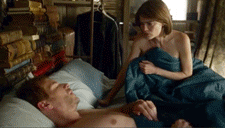
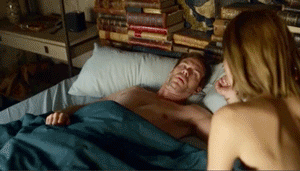
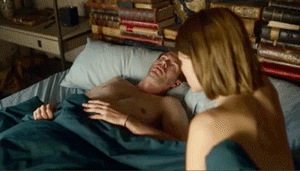
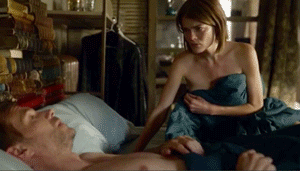
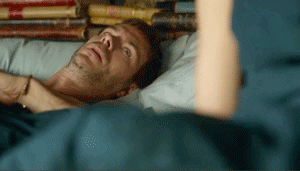
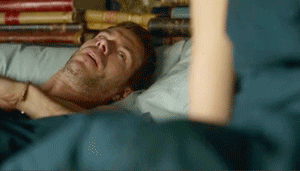
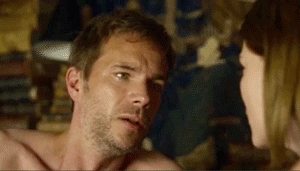
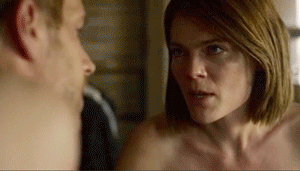

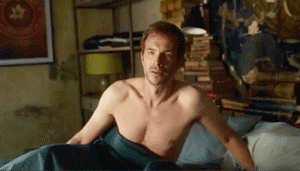
56 notes
·
View notes
Text
MY THOUGHTS ON PT. 2 OF THE TEEN MOM OG REUNION
• Mike looks SO much like Gary and he seems like a good guy; I’m so glad Gary found him
• Andrew seems like such a sweet guy. Him crying about how much he loves fatherhood gets to me
• I appreciate the relationship Amber, Gary, and Kristina have cultivated
• I’m actually going through an ectopic pregnancy myself right now and it is so difficult and scary and heartbreaking and we found out at 6.5 weeks (I’m 7.5 now and am going through medication treatment). I cannot imagine being in Kristina’s shoes and not finding out until 16 weeks with a heartbeat. That’s so heartbreaking
• Dakota doesn’t always handle things the best way but I like him
• I think Dakota and Bristol both need individual therapy (especially Dakota) and I think they could’ve done that, with relationship therapy, and worked it out
• I think it’s sad both Dakota and Bristol say they would never re-marry each other or anyone else. Of course everyone wants to only marry once but sometimes things happen and that’s life
• I also hope one day Taylor and Ryan can sit down and talk
• I think Maci really does have a lot of love for Ryan and I love that, and I love that Taylor holds no resentment or bitterness for that
• I don’t love Mackenzie but spending your first wedding anniversary alone with a newborn while your husband is in rehab would be so sad
• Cheyenne and Cory are a very good looking “couple”
• Cheyenne’s eyebrows look so nice
• I respect Cory and Cheyenne for having the open communication that they have and managing things as they have, which for the most part I think has been responsible and is always Ryder first
• I feel for the situation Cheyenne is in with Cory
• I love Dr. Drew
• Man they’re being tough on Cheyenne lol
• Oh, Cory said no so fast. If I was Cheyenne I would be crying tbh. I admire her for holding up so well right now
• If Cory is looking to love a potential spouse the exact same way that he loves his child he will never find what he’s looking for
• Man, I just think Butch is so adorable
• Over a year sober ugh I want to cry for Butch and his family that makes me so happy
• Oh no Butch crying I’m gonna lose it
• Ah if I was Amber I think I’d be very nervous about coming onto the live reunion
• I’m so glad that when Amber realized her addiction was directly affecting her kids she used that to clean up
• 7 months sober, yay Amber
• “I get a lot of things wrong in this little circle” lol at Tyler
• Tyler is pretty over it, you can tell. And I mean that’s fair
• I’m so excited for the next season of Teen Mom 2, not gonna lie (commercial)
• God those kids are so cute
• Oh my GOD Nova being “Toodles” is killing me
• Ryder is so cuuute
• Emabrassing Bentley about his girlfriend I’M DEAD
• James has beautiful eyes
• 1.3 million unplanned pregnancies in the US each year...as someone with fertility issues that statistic huuurts
#gary shirley#andrew glennon#amber portwood#kristina shirley#maci mckinney#maci bookout#jen edwards#larry edwards#ryan edwards#mackenzie standifer#mackenzie edwards#dakota meyer#bristol palin#cheyenne floyd#cory wharton#taylor mckinney#dr. drew#mtv teen mom og#teen mom og#mtv#butch#sobriety#addiction recovery#teen mom 2#addiction#ectopic pregnancy#pregnancy loss#infertility
5 notes
·
View notes
Text
Homer and Herodotus
” Homer and Herodotus: friends or foes?
by emmabridges | May 1, 2019 | Conferences | 0 comments
Dr. Ivan Matijašić (Newcastle University) reports on a recent workshop held in Newcastle and supported by an ICS conference grant.
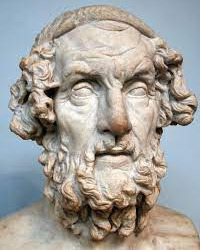
Portrait bust of Homer. Roman copy of a Hellenistic original. (BM 1825).
The workshop Homer and Herodotus: A Reappraisal was held at Newcastle University, 4-5 March 2019. Participants and attendees alike discussed the intertextual relationship between Homer and Herodotus, the various common themes that emerge from their works, and their later combined reception in antiquity.
Both authors are well known even outside the narrow circles of professional classicists. Homer, or rather the author of the Iliad and the Odyssey, is undoubtedly the father of Greek epic poetry. Herodotus was, according to a famous Ciceronian claim, the father of history, whose work contained nonetheless many fabulae (‘myths’, ‘stories’). Their significance for ancient Greek literature, history, archaeology and historiography cannot be overestimated. The ever-growing amount of publications on both Homer and Herodotus, including several ‘Companions’, is impressive and sometimes daunting.
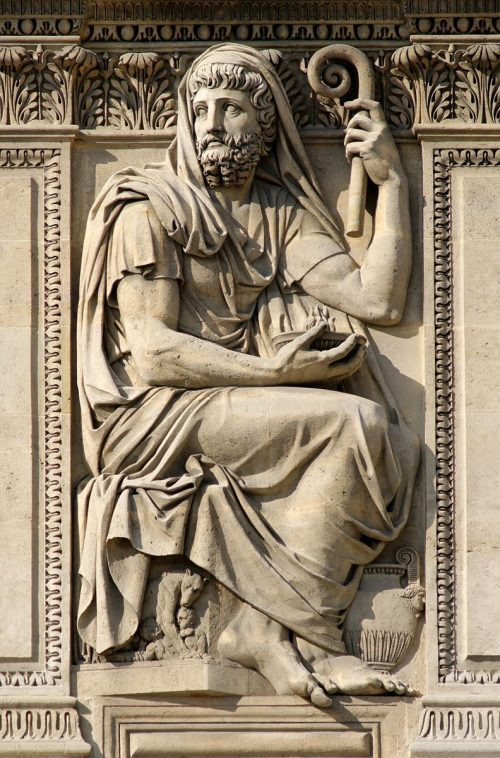
Herodotus by Jean-Guillaume Moitte, 1806. (Louvre Palace, Paris.)
At the end of 2017 I accepted an invitation to participate to a postgraduate seminar in Venice. The organisers, Ettore Cingano and Stefania De Vido, gave me free rein on the topic. I decided to focus on a disputed passage in Athenaeus’ Deipnosophistai which refers to dramatic performances of the works of Homer and Herodotus in a theatre in Hellenistic Alexandria. However, the name of Herodotus has been effaced from the most important editions and translations of Athenaeus since the nineteenth century, when Friedrich Meineke, a great classical scholar, questioned the correctness of the passage and replaced Herodotus’ name with Hesiod’s.
My stance was that the text of Athenaeus’ should not be corrected for a number of sensible reasons. Among these reasons I also included the – sometimes overlooked – fact that in ancient thought Homer and Herodotus were regarded as two complementary authors: the themes they treated, their language and their style were often considered related. (My article on this Athenaeus passage is going to appear in the next issue of the Journal of Hellenic Studies.) When I started looking for a comprehensive study on the relationship between Homer and Herodotus in antiquity, I found out that, apart from a few articles by John Marincola and Christopher Pelling, there was nothing I could rely on for my argument. To express myself more clearly: there is no book-length study that focuses on both authors.
Hence, I decided that the time was ripe to organise a conference on this topic and started to put together a list of possible participants. Scholars of different ages and backgrounds were involved in this conference, from early career researchers to emeritus professors. Their range of intellectual traditions allowed for the combination of different perspectives in a very constructive way. The final list of speakers included: Christopher Pelling (Oxford), Maria Fragoulaki (Cardiff), Pietro Vannicelli (Sapienza, Rome), Giulia Donelli (Bristol), Massimo Giuseppetti (Roma Tre), Thomas Harrison (St Andrews), Joseph Skinner (Newcastle), Olga Tribulato (Venice), and me.
Chris Pelling, in his fascinating keynote lecture ‘Homeric and Herodotean intertextuality: what’s the point?’, opened up various possible lines of enquiry when dealing with authors from the archaic and classical ages. Homer’s Iliad and Odyssey were surely familiar poems in the fifth century BC. References and allusions to the Homeric poems in Herodotus’ Histories highlight the different ways in which an audience might react to certain stories and narrative patterns. Chris’ paper raised many questions, and tried to provide a few answers, on reader-response and intertextuality.
The various speakers tried to assess, from different perspectives, how much can be plausibly pinned down as actually intertextual between Homer and Herodotus and how much should refer to a general mythical matrix. Many different and engaging themes were tackled during the two-day workshop: from representations of the human body in war-related contexts (Fragoulaki) to Xerxes’ expedition against Greece (Vannicelli), from Herodotus’ reception of poetic frames of truth and fiction in Book 8 (Donelli) to appropriation and deconstruction of Homeric epics in Herodotus’ Book 2 (Giuseppetti), from the nature of gods in Greece and Egypt (Harrison) to issues of Greek identity (Skinner), from the linguistic analysis of Herodotus’ language (Tribulato) to the combined reception of Homer and Herodotus in ancient culture (Matijašić).
The workshop allowed for the discussion of a number of general issues, for example: the ‘Homeric world’ through the lens of Herodotus’ Histories; the nature of the language of both authors and how it was perceived in antiquity; the reception of the Homeric epics, and of poetry in general, in Herodotus; the different ways in which later audiences responded to their intertextual relationship. The workshop was attended by more than thirty people, including colleagues, graduate students and undergraduates. Christopher Tuplin very kindly accepted my invitation to give the concluding remarks and offered many exciting perspectives.
My aim is now to collect the various contributions and publish a volume that will hopefully represent a reference work: it will certainly fill a gap in the current scholarship on Homer and Herodotus. From a wider perspective, the output of the workshop will contribute to the advancement of our knowledge in the field of Greek historiography, epic poetry, fifth-century-BC literacy and intertextuality in Greek literature.
by Ivan Matijašić
(Images courtesy of Wikimedia Commons.)”
https://ics.blogs.sas.ac.uk/2019/05/01/homer-and-herodotus-friends-or-foes/
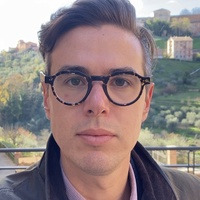
Ivan Matijasic, Università Ca' Foscari Venezia ( https://unive.academia.edu/IvanMatijasic)
Very intersting article and seminar about two major ancient Greek classics. My only remark is that Cicero’s phrase that Herodotus was the Father of History, but his work included many fabulae, must be understood in the context of the not always easy relationship of a Roman of Greek culture like Cicero with the Greek heritage. But anyway, the “tales” in Herodotus’ Histories do not “cancel” his imposing intellectual achievement as the first historian and Father of History, the overall sound structure of the Histories, and the wealth of accurate historical and ethnographical information in Herodotus’ work. Moreover, and despite some inevitable Hellenocentrism in Herodotus, in most cases these “tales” preserve oral traditions and give us the opportunity to understand how peoples of the Antiquity saw themselves, their gods, their rulers, their neighbors or enemies, their past, and more generally their world.
1 note
·
View note
Text
TF2 Mage AU
A Team Fortress 2 AU where magic exists and I change the storyline.
Hi! I don’t post here often, so I thought I’d change that by posting something that’s been occupying my thoughts for a while: a TF2 mage AU! When I discovered that a mage AU didn’t exist (at least, not any that I could find), I just had to take it upon myself to make one of my own. So, here are all of the ideas I currently have for the AU! Note that (eventually) this will become a written story. How long that will take, I have no clue. I still need a plot (if you have any plot ideas please please let me know; I’m desperate).
Basic Premise/World Info
The premise of the AU is, obviously, that mages exist. When people reach a certain age, they are allowed to start learning a single type of magic. There are many different magic types, ranging from elemental magic to dark magic. When a mage reaches a certain skill level, they are given a Familiar. They do not get to pick their Familiar- their Familiar picks them. They then keep their Familiar as a pet. The Familiar’s state of health, life span, and mood are synced with their owners (so for example, when their owner is sick the Familiar is sick, when the owner is sad the Familiar is sad, when the owner dies the Familiar dies, etc.). There are some people who choose not to take up a type of magic. These people are creatively referred to as Nomages, and in some cultures are looked down upon (though the same could be said about Mages).
Some things to clear up about the altered side of the AU are 1) The BLU team does not exist; I never saw a need for the two teams, and having them both just leads to basic and generally overused plot lines, 2) Australium doesn’t exist!! No immortality crap, 3) Gray Mann is the younger brother of Redmond and Blutarch (Red and Blu are still twins) and does not have a ridiculous story of him being able to talk since birth and being raised by eagles and whatnot, and 4) Saxton Hale is not very important to the plot. In fact, he’s actually dead in this AU. I wasn’t going to include him at all because I don’t like him and I couldn’t figure out how to fit him in, but a friend of mine actually had a cool idea for him being dead that I’ll elaborate on later.
Anyways, with all that out of the way, it’s time to introduce the characters!
Characters (headcanons and other details will be saved for asks)
Offense Classes (Elemental Mages)
Scout
Name: Jeremy Andrews
Gender: Male
Sexuality: Straight
POB: Boston, Massachusetts, USA
Age: 27
Magic Type: Wind
Uses his magic to move faster, jump higher, and knock back enemies. I’d imagine he’d also use it to propel himself past or over enemies to land in front of or on top of them.
Decided to learn wind magic for basically the canon reason: he wanted to get the upper hand in fights, and also wanted to manage to beat his brothers to fights. So, instead of Speed magic, he decided to take up Wind magic since not only did it make him faster, but it is a great tool for fighting.
Soldier
Name: Jane Doe
Gender: Male
Sexuality: Pansexual, he really has no preference
POB: Minneapolis, Missouri, USA
Age: 50
Magic Type: Earth
Uses his magic to reach high places and throw literal boulders at people; basically a replacement for his RPG.
Took up earth magic to thereotically assist him in WWII (because if he’s a mage, they’d have to accept him, right?). He also found being able to throw destructive boulders to be incredibly helpful in any fight.
Pyro
Name: ???
Gender: Nobody knows, everybody just refers to them as a they or an it.
Sexuality: Aromantic asexual
POB: ???
Age: ???
Magic Type: Fire
Fire.
Idk what to tell you man they just really like fire.
Doesn’t have the optical mask; they see everything as it really is, but their behavior towards fire and death and destruction remains the same. They still like unicorns and rainbows.
Defense Classes (Trait Mages)
Engineer
Name: Dell Conagher
Gender: Male
Sexuality: Mostly straight, but he leans both ways. Ultimately, he doesn’t care much about relationships.
POB: Bee Cave, Texas, USA
Age: 43
Magic Type: N/A (Nomage)
Doesn’t see a need to learn magic, he already has enough skill in the engineering field.
Was mainly hired because his family worked for the Admin’s family for decades. And also because, y’know, he’s one of the smartest people on the planet.
Heavy
Name: Mikhail 'Misha' Morozov
Gender: Male
Sexuality: Bisexual
POB: Dzhugdzhur Mountains, Khabarovsk Krai, USSR
Age: 57
Magic Type: Strength
Uses his magic to make himself inhumanly strong whenever he so chooses. This means he can switch from oh so gentle to strong enough to crush bone in seconds.
Took up Strength magic after he escaped the gulag to better protect his family, should the need arise.
Demoman
Name: Tavish DeGroot
Gender: Male
Sexuality: Straight
POB: Ullapool, Scotland
Age: 49
Magic Type: Leaping
His magic basically just lets him jump really high (higher than Scout can go with his magic). This lets him shoot/throw grenades/bombs from more effective and destructive distances.
Mostly took up Leaping magic just to get his mom off his back about him learning magic. His father was a Leaping Mage, so Demo simply followed in his footsteps.
Support Classes (Arcane Mages)
Medic
Name: Dr. Ludwig Humboldt
Gender: Male
Sexuality: Gay
POB: Stuttgart, Germany
Age: 45
Magic Type: Necromancy
Familiar: Archimedes - Dove
Uses his magic to revive people, heal people, and communicate with the dead.
Took up the controversial art of necromancy to aid in his job. This eventually cost him his medical license.
Ngl I'm super excited to write Necromancer Medic I'm really happy with this concept help
Sniper
Name: Mick Mundy
Gender: Male
Sexuality: Straight
POB: Whyalla, Australia
Age: 28
Magic Type: Shadow
Familiar: Hunter - Australian Shepard
Uses his magic to teleport into and transform into shadows. This is helpful for sneaking in between watchtowers and passing people unseen.
Began learning Shadow magic before he was even a sniper. He has always been an introvert and wanted to be able to get through crowds unseen and hide from people without being found.
Despite his young age, he already has a Familiar. He's just that much of a professional.
Is actually from Australia and the Mundys are his birth parents.
Spy
Name: Eugène Baudelaire
Gender: Male
Sexuality: Straight
POB: Bordeaux, France
Age: 46
Magic Type: Mind
Familiar: Jacques - Birman
Uses his magic to read minds, bend wills, and use telepathy. These abilities all have some limits, but they are incredibly useful nonetheless.
Always enjoyed being sneaky and deceitful as a child, and as he got older he started learning Mind magic. This combined with his cunning nature and Dell's cloaking technology makes him one of the most stealthy and dangerous men in existence.
Although he denies it, he loves Jacques more than anything or anybody else. He'll often let the cat curl up on his lap while he's reading a magazine in his smoking room.
Other Characters
The Administrator
Name: Helen Callaway
Gender: Female
Sexuality: Aromantic asexual. People are horrid.
POB: Bristol, UK
Age: 56
Magic Type: N/A (Nomage)
Runs Team Fortress and uses them for her own needs.
A family friend of the Manns who took over TF after all the Mann brothers were m y s t e r i o u s l y murdered.
Miss Pauling
Name: Allison Pauling
Gender: Female
Sexuality: Closeted lesbian
POB: Like. America or something. (Madison, Wisconsin for now idk)
Age: 31
Magic Type: N/A (Nomage)
A close friend and long-time assitant to the Admin. Eagerly helps her run TF.
Redmond Mann
Gender: Male
Sexuality: Straight
POB: England or somewhere, idfk. The Manns are British or something right?
Age: 89
Magic Type: Fire
Before his and Blutarch's death, he ran the RED team. After his death, the remains of his team consisted of only Pyro, Engie, Demo, and Spy.
Never used his magic. They only reason he learned Fire magic was to try to get the upper hand on his twin.
Blutarch Mann
Gender: Male
Sexuality: Straight
POB: Ditto
Age: 89
Magic Type: Ice
Ran the BLU team before he died and the two teams were merged. After his death, his team consisted of only Scout, Soldier, Heavy, Medic, and Sniper. Since he had more people on his team at the end, he counts this as a win for him.
Also never used his magic. Learned Ice magic also to try to get the upper hand as his brother. Their magic types basically cancelled each other out, so this was not helpful in the slightest.
Gray Mann
Gender: Male
Sexuality: Straight, but couldn't care less
POB: Ditto
Age: 84
Magic Type: Shadow
Familiar: Delta - Bald Eagle
After he murdered his older brothers, he took over TF Industries and merged RED and BLU to create Team Fortress.
Took up Shadow magic in preparation for the day he would get what he wanted. It also comes in handy for literally anything illegal.
Saxton Hale
Gender: Male
Sexuality: Straight
POB: A U S T R A L I A .
Age: 37
Magic Type: Strength
Ran TF Industries in its early days alongside the Mann twins before he died.
Learned Strength magic to better wrestle animals. That's it.
Idolized by literally only Soldier. Everybody else is like "Yeah no that guy was an idiot."
Wow. That was a lot to write, and I did it all in one sitting. It is late. I am losing the ability to comprehend any thoughts.
So anyways, I'd love to hear your guys' thoughts on this!! It's a heavy WIP, so I'd appreciate feedback and suggestions ;) Also, please feel free to submit asks about the AU!! It'd help a lot with its development! Also, plot ideas would be MUCH appreciated. Literally the only thing that ever prevents me from writing is my inability to come up with a plot. So if you have literally ANY ideas, please do submit them via an ask! I'd love to hear them, no matter how stupid you think they may be!
That's all for now! I'll post writing and art for the AU whenever I get around to that. Stay tuned, and please do send me your thoughts! I'll see you all later ✨
#tf2#tf2 au#tf2 scout#tf2 soldier#tf2 pyro#tf2 engineer#tf2 heavy#tf2 demoman#tf2 medic#tf2 sniper#tf2 spy#tf2 administrator#tf2 miss pauling#mage au#alternate universe#tf2 mage au#necromancer medic#sniper would totally name a dog hunter
37 notes
·
View notes
Text
Plants evolved ability to actively control water-loss earlier than previously thought
https://sciencespies.com/nature/plants-evolved-ability-to-actively-control-water-loss-earlier-than-previously-thought/
Plants evolved ability to actively control water-loss earlier than previously thought
New research has shed light on when plants first evolved the ability to respond to changing humidity in the air around them, and was probably a feature of a common ancestor of both flowering plants and ferns.
Key to the regulation mechanism are tiny holes, or pores, on the surface of leaves, called stomata. These enable the plant to regulate the uptake of CO2 gas as fuel for photosynthesis, and the loss of water vapour — a constant balancing act that requires the pores to open and close according to changing conditions. This ability is important to agriculture because it helps crops to use less water to grow.
Plants first evolved stomata soon after they moved from water to land, some 450 million years ago, but scientists are still uncertain about the evolutionary pathway they took and the point at which plants became able to choose whether to open or close the pores in response to their environment.
In the most recently evolved plants — flowering plants — stomata closure in response to drought is actively triggered by a number of internal signals, including a hormone called abscisic acid (ABA), but scientists have been struggling to understand if this mechanism is also present in older groups of plants. In a new study, published in Current Biology, researchers at the University of Birmingham have found evidence that the fern species Ceratopteris richardii actively closes its stomata using similar signals.
This semi-aquatic tropical fern has recently become the first model for exploring genetic control of development in the fern family, and is now helping scientists to unpick the long evolutionary history between the earliest land-living plants (mosses, liverworts and hornworts) and the modern flowering plants that dominate today’s ecosystems.
The team used RNA sequencing technology to identify the genetic mechanisms behind different stomatal responses and was able to demonstrate the fern’s ability to close stomata in response to low humidity or in response to ABA involves copies of genes already known to control stomata in flowering plants.
The results suggest that both ferns and flowering plants evolved using similar stomatal closure methods. This indicates that these mechanisms were present — at least in some form — in the stomata of the last common ancestor of both groups.
Dr Andrew Plackett, of the University of Birmingham’s School of Biosciences and Birmingham Institute of Forest Research, led the research in collaboration with groups at the University of Bristol and the University of Oxford. He said: “We know that plants have possessed stomata for most of their evolutionary history, but the point in evolution where plants became able to actively open and close them has been controversial.
“We’ve been able to show the same active closure mechanisms found in flowering plants are also present in ferns, a much older group of plants. Being able to better understand how these mechanisms have changed during plant evolution gives us useful tools to learn more about how they work. This will be important for helping our crops to adapt to future environmental changes.”
Alistair Hetherington from the University of Bristol said: “This new work confirms that the earliest plants were able to actively control the water they lost through the microscopic valve like structures on the surfaces of leaves known as stomata. This is important because it shows that the intracellular machinery allowing stomata to open and close was present in the earliest land plants. The research also shows that, whether stomata respond actively or passively is dictated by the environment in which the plants lived.”
Story Source:
Materials provided by University of Birmingham. Note: Content may be edited for style and length.
#Nature
2 notes
·
View notes
Text
me David Attenborough against
Scotty cam the block Melbourne Brisbane Perth Adelaide Tasmania launceston Hobart Edith cowsn Ian dadour geologist lecturer at uwa n Malay student dep agriculture transport translink transport apple Microsoft security Wilson security hypnotists custom officers harpur hill mantra on the esplanade crystal brook Flynn crystal brook baileys ymca, chasers, Francis st that, Matt vet Bristol university Oldham vets Yorks lambs Surrey Sussex Kent Calais Normandy Brittany Harvey Norman Oscar’s rlo cairns hospital Australian dept health gtr Manchester police, ambos, fireos pupils cairns high school outside mental health gordonvale Edmonton kuranda atherton initial Dublin Belfast Swansea Blackburn House of Lords Westminster Houses of Parliament Clayton Oldham careers office geographers baker Aaron army Milton shaw police oaafc rothwell colwyn bay pew hello Prestatyn Preston Leeds Liverpool Sheffield bath Truro Somerset nuclear power coal miners krap ashrams of Oldham Rochdale n Pakistan n doc kearns mr jones mr overt Jew physics teacher at n chadd ftom manc poly 1989 Kev Barrett s mate ste Evans Darren farthing Darren bond Andrew gaff Peter Harrison Wayne Harrison hibbert Chris the mirror Stella fabricant mehgna Sherman south lakes shops town pub in Perth Western Australia christadelphians Campbell Yasmin , Cottesmore broome Jean Pierre IRA Gerry Adam’s wood woods Alan wood Nicola hall Brussels Charleroi buttons pontins repo derby Ken Nicholson yeomans convenience store Clayton Dena Aussies lesbians homosexual s adidas Nike under armour heroin users prostitutes cairns festival Elaine Lancashire n mates Martin place George St George karpathakis Katrina hostel 89 palm cove aus post eBay Amazon Jeffries the boulevarde tnt Toyota Nissan be great wall Mazda Hyundai Mercedes bmw ford holden Volvo Saab Mitsubishi sister mets analabs western mining dante joy division Curtis sparrow mason Williams holmes Belford Oakley larder Taunton minehead channel tunnel p and o ferries captain cook Plymouth Whitby Filey half cast Aussies clones Berliners krauts Hamburg clone frankfurt air nz Joe Doyle Darren Doyle au Luke rothwell alman Leon Christina tafewa Tara’s photomedia media studies Juanita fe Stafford Sharon babalola sue Lucas trump YouTube Facebook meta omari arshad Prakash Sikh hindis mudlims arabjews Lebanon syr alb Greeks Wessex Tenby Dublin cork Belfast Edinburgh Glasgow Inverness Aberdeen Coventry Birmingham Heathrow Gatwick ringers Nottingham ure twins ste bond Prescott mr mr wriggley n Howard Tony Blair bush Howard Clark platt tacconay Ian Parkinson bodkin lingarde grain Danny Brant Marie Anne Sydney a n e Brisbane a and e ambulance transport paramedics Sri Lankan drs and pay psychiatrist s Bharat Indians catholics saddleworth Gloria Delphi Bradford Halifax Jensen bridge pakis Pakistan Islamabad Mumbai goa kirrula bengal Colombo shaki Kim Kardashian’s katy perry coin negro black honks ferranti bae British aerospace Boeing Burmese afghans eth eri gha Nigeria sth Africans blonde white brown whitehead teslees Wembley greenbushes minproc engineer cotton technology park Alexander library wa museum pert art gallery north Perth police ina and insuk paid for weddings to col hill dept corrections banksia hill dunwoodys cairns work stay play jj’s backpackers lynne Blythe chad broad water sushi train mother hub bards Tameside tech blue John mine Indian motorcycles Harley Davison qld ral world heritage organisation un eu oxbridge shaw Dutton wakeman wyn jones aisbit shelley slf dk with wood marathon Oldham curry house co-op Manchester bombers racists Nazis vilifiers the filth London metropolitan police all saints oasis stone roses key fm 103 sweeney itv granada Apollo Jesus n Mary chain elvis travolta borders Ashleigh Natasha social workers psychos losers smellies caravels Quebec Toronto Saskatchewan Bonn Swiss Austrians lux Andorra San Marino Bosnia Croats Serbians Kosovo Czech Republic Prague jevadiah bob gayle artingstall cal francis
1 note
·
View note
Link
Excerpt from this EcoWatch story:
The climate crisis has us spiraling towards higher temperatures while also knocking out marine life and insect species at an alarming rate that continues to accelerate. But, just how long will it take Earth to recover? A new study offers a sobering answer: millions of years.
The researchers tried to answer how long it takes biodiversity to recover following a mass extinction. Their paper, published in Nature Ecology and Evolution, looked at the fossil records of plankton which existed for nearly 20-million years near the last mass extinction, which killed off most dinosaurs and 80-percent of Earth's animals, nearly 66 million years ago. Species diversity recovered after 10 million years, Newsweek reported.
"From this study, it's reasonable to infer that it's going to take an extremely long time — millions of years — to recover from the extinction that we're causing through climate change and other methods," said study co-author Dr. Andrew Fraass to Newsweek. "It is an apt warning about the time it takes to recover from massive losses in species."
The findings have striking implications for the long-term health of the planet and the future of humanity as we confront a climate crisis, habitat destruction and invasive species, all of which parallels ancient times, according to a University of Bristol press release.
"This should serve as an important reminder: some ecological niches lost due to anthropogenic climate change will never reappear," the authors wrote in their study. Essentially, the Earth will be drastically different after a mass extinction, according to Forbes.
218 notes
·
View notes
Text
PHOT202: Working From Home.
Due to the likelihood that the lockdown will last longer than predicted, I have chosen to base my chosen theme of “Rise and Fall Of Paignton” at home where I will redefine the creative approach of photography.
As I have previously looked at magnum photography artists, it is the first place I wanted to start looking for home based work that could give inspiration into my learning. I found the title “Home” that has become a quest for several photographers to document their surroundings in relation to what it means to them. Although I am choosing to document a place I cannot visit right now, I can use metaphorical meaning to bend the narrative to my will.
So to prepare for this here are some artists who have chosen to work as a creative photographer in their homes -
On My Doorstep
SIAN BONNEL
Using everyday items of food, Sian Bonnell reconstructs the home environment. Fried-egg bathroom mats, pasta tablecloths and sliced meat floor-tiles abound, whilst other foodstuffs take on new character – a plate of mash and peas becomes the distant landscape of some undiscovered continent; and carrots, parsnips and bananas become surreal candles in a candelabra of the absurd.
As Sian Bonnell says: “I am intrigued by the absurd. Life and the reality of our lives is steeped in absurdity so although my images may look surreal, to me they are more a kind of absurd reality.”
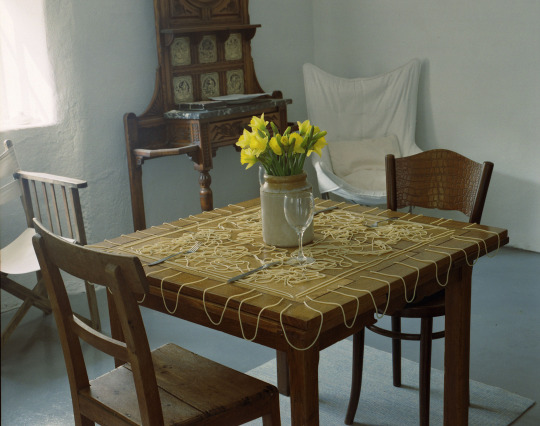
ANDRE KERTESZ
Perched inside his apartment 12 stories above Washington Square Park, Andre Kertesz beheld a cityscape of trees, rooftops and snow-covered paths. Caught between distance and intimacy, his images revealed with affection and longing a Hungarian émigré who was an outsider in his adopted land.
“There is a kind of psychological component to it,” Robert Gurbo, his estate’s curator, told Lens in 2015, “where he is clearly looking to see what they have to see, what he has never had.”
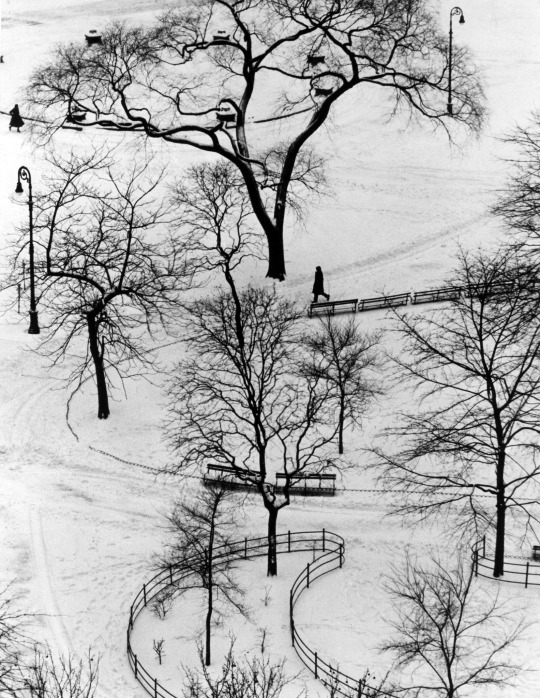
WILLAM EGGESTSON
William Eggleston is one of the most influential photographers of the latter half of the 20th century. His portraits and landscapes of the American South reframed the history of the medium and its relationship to color photography. “I had the attitude that I would work with this present-day material and do the best I could to describe it with photography,” Eggleston explained. “Not intending to make any particular comment about whether it was good or bad or whether I liked it or not. It was just there, and I was interested in it.”
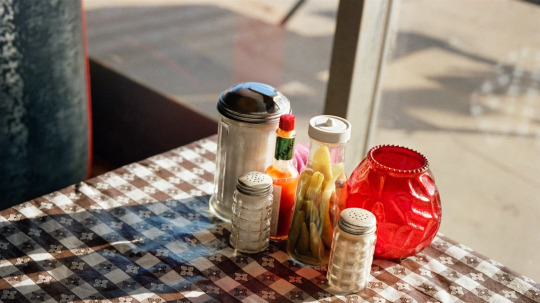
NIGAL SAFRAN - DADS OFFICE
Dad’s Office by Nigel Shafran is a set of rather bleak photographs taken between 1996 and 1998, of the contents of the abandoned rooms from which his father had once worked.
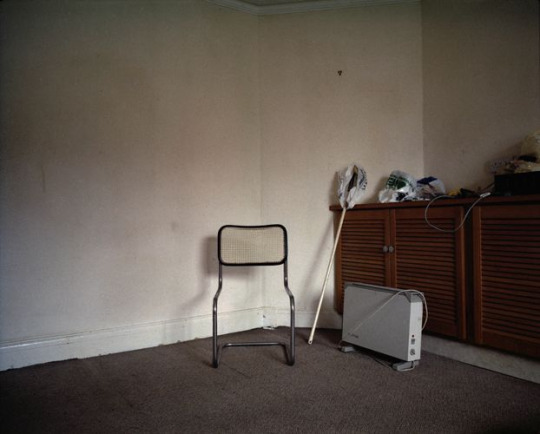
WASHING UP – NIGEL SAFRAN
This series is one of several that Shafran has undertaken, using mundane subjects that we usually see, but don’t See, in everyday life, such as Supermarket Checkouts (2005), Compost (2008-9), and Building Supplies (2004-5). He enjoys bringing these activities and places into focus, so that we can view them with new eyes.
Washing Up is a series of images of his kitchen, after the washing up has been finished, but the pots and pans have not yet been put away. The images are supplemented by short explanatory notes, which detail the food in the meal concerned, and perhaps who was at the meal. On the face of it, one image alone says little about what Shafran wanted to show us; it is the journey through different days, meals and light that reveals the detail of his life so tellingly.

MARTIN PARR
At first glance, his photographs seem exaggerated or even grotesque. The motifs he chooses are strange, the colours are garish and the perspectives are unusual. Parr’s term for the overwhelming power of published images is “propaganda”. He counters this propaganda with his own chosen weapons: criticism, seduction and humour. As a result, his photographs are original and entertaining, accessible and understandable. But at the same time they show us in a penetrating way how we live, how we present ourselves to others, and what we value.
Leisure, consumption and communication are the concepts that this British photographer has been researching for several decades now on his worldwide travels. In the process, he examines national characteristics and international phenomena to find out how valid they are as symbols that will help future generations to understand our cultural peculiarities. Parr enables us to see things that have seemed familiar to us in a completely new way. In this way he creates his own image of society, which allows us to combine an analysis of the visible signs of globalisation with unusual visual experiences. In his photos, Parr juxtaposes specific images with universal ones without resolving the contradictions. Individual characteristics are accepted and eccentricities are treasured.
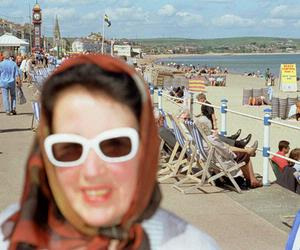
JEM SOUTHAM
Jem Southam, born in Bristol in 1950, is one of the UK's leading photographers. He is renowned for his series of colour landscape photographs, beginning in the 1970s and continuing until the present. His trademark is the patient observation of changes at a single location over many months or years.
Southam's subjects are predominately situated in the South West of England where he lives and works. He observes the balance between nature and man's intervention and traces cycles of decay and renewal. His work combines topographical observation with other references: personal, cultural, political, scientific, literary and psychological. Southam's working method combines the predetermined and the intuitive. Seen together, his series suggest the forging of pathways towards visual and intellectual resolution.

ANDREW NODOLOSKI
In 1996 Andrew Nadolski began photographing the unique landscape of Porth Nanven, a remote beach on the west Cornwall coast. What began as an intensely personal set of pictures has grown to that of major exhibited work keenly sought by collectors.
Published for the first time in book form, together with a fascinating essay by Dr Richard Scrivener of the British Geological Survey and a passionate foreword by Tim Smit, the work takes on an extra dimension.
Here we see the interaction of land and sea that so fascinates Nadolski, not as isolated images but sequenced as a visual poem.
The End of the Land is a powerful body of work that extends the boundaries of the photographed landscape and begins to question our understanding of humanitys place in the universe and indeed, our perception of time itself.
1 note
·
View note
Text
Master List
Looking to trade but happy to gift. Message me which ones you would like, I’m looking for any musicals I don’t have. (Unless stated, I don’t know the cast nor date, please let me know if you do)
Heres a list of bootlegs I have:
A Bronx Tale
A Chorus Line (2006 Broadway revival, opening night)
A Gentlemen Guide to Love and Murder
Andrew Rennells pbs
Amelie (Pippa)
Amelie (Sam Barks)
American Idiot | Los Angeles | Full Show
Anything Goes
Anything Goes with Sutton Foster and Joel Grey
Bare Original off-Broadway
Bare 2012
Bee more chill FULL 2018 off-broadway
Be More Chill (20 minutes)
Be More Chill Play
Be More Chill Clips
Book of Mormon (OBC)
Book Of Mormon (Ben Platt as Elder Cunningham)
Bonnie & Clyde on Broadway
Bring It On OBC
Cabaret (Emma Stone)
Carousel
Carrie (Revival)
Carrie - Alice Ripley & Keaton Whittaker
Catch Me If You Can Broadway
Charlie and the Chocolate Factory
Chicago - US Tour
Colour Purple
Come From Away
Cursed Child
Dear Evan Hansen -OBC
Dr. Horrible’s Sing-Along Blog
Deaf West Spring Awakening
Falsettos
Falsettos 2016 Revival
Fire Bringer (Team Starkid)
Fun Home
Everybodys Talking About Jamie
Great Comet
Grease (low quality)
Groundhog Day
Gypsy (2003 Broadway revival)
Hadestown
Hamilton OBC
Head over heels
Heathers
Hedwig and the Angry Itch (Darren) and other cast
How I Met My Mother: A Back to the Future Parody Musical
If/Then before Pre Broadway Washington, D C
If/Then before (Broadway preview performance)
In the Heights OBC and February 14, 2008 and other casts
Into the Woods
Jekyll & Hyde: The Musical (1997)
Kinky Boots
Legally Blonde OBC and other casts
Les Mis (Revival)
Lightning Theif
Little Shop of Horrors
London Hadestown
Matilda
Miss Saigon
Miss Saigon previous Broadway run
Natasha, Pierre, and The Great Comet of 1812 OBC
Newsies (Pro recording and Boot)
Newsies (ProShot)
Next to Normal
Next to Normal Alice Ripley
Oliver!
Peter Pan Live
Phantom of the Opera
Portal 2: The (Unauthorized) Musical - 2017 Production
RENT - Professional Recording
RENT - Opening Night
Six the Musical
Something Rotten
Spongebob the Musical
Spring Awakening 10/18/2015
Sweeney Todd OBC
The Prom
The 2017 Tony Awards
The 2019 Tony Awards
Twisted: The Untold Story of a Royal Vizier (Starkid)
Waitress
Wicked
West Side Story (2009 Revival)
Yank!
9 to 5: the musical
21 Chump Street
25th Annual Putnam County Spelling Bee OBC
25th Annual Putnam County Spelling Bee
AUDIOS
Be More Chill (and script)
Charlie and the Chocolate Factory
Cursed Child
Hamilton Workshop
Wicked 2NT 1-7-17
Wicked UK tour - Opening Night, Bristol 31st January
12 notes
·
View notes
Photo
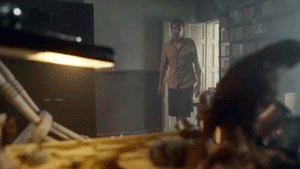
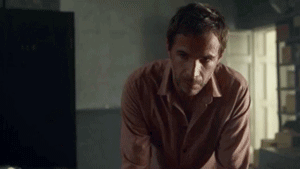
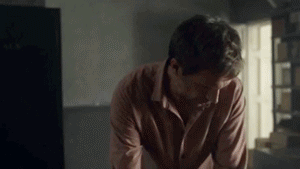
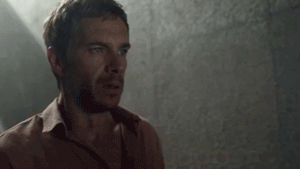
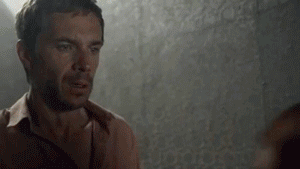
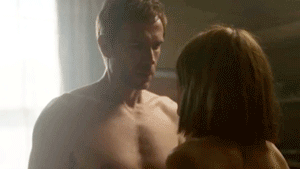
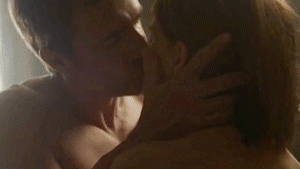
19 notes
·
View notes
Text
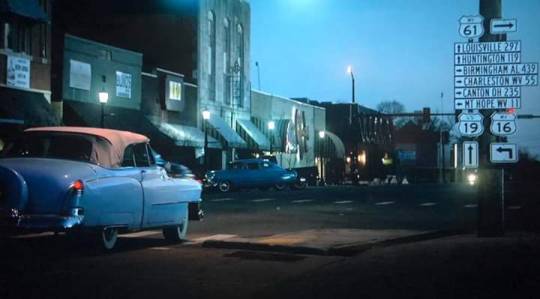

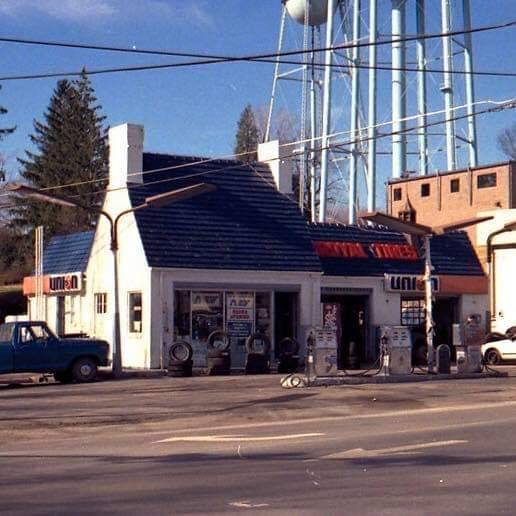


December 31, 1952 - January 1, 1953 (7:00 p.m. - 7:00 a.m.)
Charles Carr parked the Cadillac in front of the front of the Andrew Johnson Hotel in Knoxville, Tennessee at 7:00 p.m. He went inside and got a room for himself and Hank Williams. All the downtime from waiting for the flight earlier that day gave Hank plenty of time to finish off the bottle of whiskey he had bought from the bootlegger in Fort Payne earlier that day, the effects of which were starting to show.
Carr told the bell captain that he was going to need some special assistance. He had a sick man in his car who would need help getting up to the room. Two porters were sent to assist Hank, who had been drinking on and off all day. They carried him up to the room, later stating that he was obviously intoxicated. One of them, a man named Emmanuel Martin, recalled that Hank was "Very much alive. I talked to him coming in, and I remember he made one little statement, 'When you drink like this, this is the price you gotta pay.'"
The porters laid Hank on the bed. Carr gave them a nice tip and asked them to park the car and take care of the luggage. He then ordered two steak dinners from room service. By the time they arrived, the porters were bringing their luggage into the room. Hank had developed a case of hiccups that seemed to be sending his body into mild convulsions. He only took a few bites of his steak before passing out, eventually rolling off of the bed and falling onto the floor.
His concern for Hank’s health growing, Carr placed a call to Hank’s mother in Montgomery. He explained the situation and asked her what he should do. She got in touch with Hank’s doctor, Toby Marshall, who called Carr and instructed him to have the front desk summon a doctor.
In a short time, Dr. Paul H. Cardwell, a middle aged Knoxville physician, arrived at their room. He noticed some capsules on the nightstand next to Hank’s bed, but didn't ask any questions. Apparently, acting on Marshall's instructions, Cardwell administered two injections: one of vitamin B12 and another of B6, each containing one-quarter grain of Morphine. Cardwell only stayed a few minutes, he declared Hank fit for travel and went on his way. He would later tell investigators that Hank was very drunk and about the capsules on the nightstand, but didn't know what they were or how many he might have taken.
At some point during the three hours and forty-four minutes they spent at the Andrew Johnson Hotel, Charles Carr spoke with promoter A.V. Bamford to let him know what had happened and why they did not make it to the show in Charleston. Bamford told Carr to depart Knoxville immediately for Canton, Ohio to make sure they made it in time for the matinee New Years Day show at 2:00 p.m. Hank’s contract carried a $1,000 default penalty, meaning that he would have to pay that amount of money for every show he missed. More than four thousand tickets had been sold for the show in Canton at $2.50 each. Bamford knew that if Hank failed to show, or showed up drunk, he would have a lawsuit on his hands from the local promoter, LCL Productions.
Around 10:30 p.m., Carr called down to the front desk and asked that the porters come up to the room to help get Hank and their luggage back down to the Cadillac. They returned to the room and picked up Hank, one holding him under his arms and the other holding his legs. They said later that Hank felt limber and that he didn't move. It was difficult for all four men to fit into the elevator and the porters found it necessary to bend Hank's body at the waist. While in this position, as they traveled downward in the elevator, according to the porters later testimony, Hank made a "gurgling sound" as well as a "wheezing or cough-like sound" twice, but that he never spoke or moved at all as they carried him out.
Toby Marshall later testified that he and the assistant manager of the Andrew Johnson Hotel, Dan McCrary, arranged for a relief driver seeing as Carr had been driving since early that morning, but Carr always denied this happened.
Hank was laid in the back seat of his car with his hands draped across his chest in a "V". The porters covered him with a blanket and his navy blue overcoat. Charles Carr drove out Knoxville around 10:45 p.m. headed northeast on Highway 11.
The weather was bad, a mixture of sleet and snow slowed travel to a crawl. An hour later and just twenty miles outside of Knoxville, Carr was passing through Blaine, Tennessee when he attempted to pass a bus. He almost hit a police cruiser head on as he crossed over into the oncoming lane. Driving that police cruiser was Corporal Swan H. Kitts. He hit his lights and made a u-turn, chased the Cadillac down and pulled it over.
Officer Kitts approached the Cadillac and shined his flashlight into the back seat where he could see someone lying down. His uncovered head was on the other side of the car from the drivers side. Kitts would later testify that he saw a lifeless-looking man, pale and blue looking with his collar and hat covering his face, slumped across the backseat, seemingly asleep.
He asked Carr if there was anything wrong with his passenger. Carr replied "No, he's been drinking and the doctor gave him a sedative to make him sleep." Carr seemed unconcerned, as if it were an everyday situation. Kitts wasn't convinced. "He looks like he might be dead," Kitts said to Carr. Carr assured Kitts that he wasn't but Kitts had his doubts.
Carr explained to the Corporal who his passenger was and that he was driving him to an engagement in Ohio and could not afford to be late. Officer Kitts decided not to disturb Hank but had Carr follow him into Rutledge, Tennessee.
At 12:30 a.m. on January 1, 1953, he was written a ticket for reckless driving. He was tried before Justice of the Peace Olin H. Marshall, at his home. Marshall asked Carr how much money he had on him, Carr told him $75.00 and that is what the fine turned out to be. Carr paid the fine and briefly explained the events of that day and evening to the officers. Kitts mentioned the passenger sleeping in the backseat of the car in the presence of Marshall and Sheriff J.N. Antrican, and both of them would recall that Carr seemed nervous, but again requested that Hank not be disturbed.
It was now somewhere around 1 a.m. 1953 had arrived in the midst of this bizarre interlude. Carr got back in the Cadillac and continued on Highway 11, passing through Bristol on the Tennessee-Virginia border roughly an hour and a half later. He continued north out of Bristol, picking up Highway 19 which carried them through the Clinch Mountain region of Virginia and into southern West Virginia.
At this point, Charles had been awake since they left Birmingham early that morning and it was now somewhere in the neighborhood of 3:00 a.m. He pulled into a gas station and asked the attendant where he might find a driver. He was directed him to the Doughboy Lunch Restaurant. He pulled the Cadillac into the all-night diner, deciding it was probably a good idea to get some coffee, maybe something to eat as well.
It was here that Charles Carr would claim he spoke to Hank for the last time. Once they parked, he said Hank got out of the car to stretch. He then asked Hank if he wanted something to eat to which he replied with what are believed to be his last words, "No, I just want to get some sleep." While this is possible, it seems entirely inconsistent with Hank’s condition just two hours earlier in Knoxville.
Physically and mentally exhausted, Carr entered the diner and found a cab driver who had just finished his shift, a 37 year old man by the name of Donald Surface. He agreed to drive them the rest of the way in exchange for an undisclosed amount of money and bus fair back home. Carr maintained that he and Surface stopped for a sandwich and beer in Princeton, West Virginia, and that he paid Surface and dropped him off at some point in West Virginia. Surface died in April 1965 without ever being interviewed, so his side of the story was never told, but newspaper and police reports place him at the wheel as the car neared Oak Hill, West Virginia, around 6:30 a.m. on January 1, 1953.
Regardless of who was at the wheel, the Cadillac next pulled into the parking lot of the Skyline Drive-In, a simple, cinder block restaurant on the roadside of Highway 16 in Hilltop, West Virginia. Carr looked into the backseat to check on Hank. He was lying in the back seat with his hands draped across his chest in a "V". Just the way the porters at the Andrew Johnson Hotel had placed him almost seven hours earlier.
The navy blue overcoat that had been covering Hank had fallen off of him. When Charles reached back and pulled it up over his body, his hand inadvertently touched Hank's, and it was cold and offered "unnatural resistance" as Carr would put it. He attempted to wake Hank, but got no response.
He went inside the restaurant, where he remembered seeing a potbellied stove in the corner. A man in his mid-50's walked out with Charles, took a look into the backseat, and upon seeing Hank said, "I think you've got a problem." The man advised Carr that the hospital was a couple of miles up Highway 16. Carr and Surface got back in the Cadillac and headed north.
Driving just two miles, they arrived in the small town of Oak Hill. The first thing they encountered was Burdette's Pure Oil 24-Hour Service Station. Surface stopped the car across the street from the station and Carr went inside to ask for directions to the hospital.
The service station attendant called the police and within a few minutes, officer Howard Janney arrived on the scene. He was directed to the Cadillac across the street where he opened the door and took a look at Hank lying in the backseat, confirming that he was in fact dead. Janney later told researcher Brian Turpen that Hank was still lukewarm to the touch, but that rigor mortis had set in on the arm. He then ordered Carr to follow him over to the hospital just one block away.
They pulled up to the back of the hospital, which served as the emergency entrance, where two interns came out to the car. They opened the doors, leaned inside, and confirmed to Carr that Hank Williams was dead. Carr, no doubt in a state of shock, asked if there was anything they could do for him, to which one of the interns flatly replied, "No, he's just dead." They asked Charles if he would like to take his jewelry, a ring and his watch which he did and later turned over to the county Sheriff.
The interns removed Hanks body from the back of the Cadillac, placed him on a stretcher and pushed him inside the hospital. He was pronounced "dead on arrival" at 7:00 AM January 1, 1953 by Dr. Diego Nunnari, who concluded from the state of rigor mortis and the temperature of the body, that Hank’s death could have possibly occurred two to four hours earlier, but stated he was unable to determine an exact time of death.
@enigmaticandunstable
2 notes
·
View notes
Text
Sedentary time may significantly enlarge adolescents heart
Recent World Health Organization reports and guidelines note that more than 80% of adolescents across the globe have insufficient physical activity per day. Physical inactivity has been associated with several non-communicable diseases in adults such as cardiovascular diseases, type 2 diabetes, and cancer. In the pediatric population, the majority of movement behaviour studies have focused on the effect of sedentary behaviour and physical activity on cardiometabolic health which includes blood pressure, insulin resistance, blood lipids, and body mass index. There has been a gap in knowledge on the effect of sedentary time and moderate-to-vigorous physical activity on cardiac structure and function in large adolescent populations due to the scarcity of device-measured movement behaviour and echocardiography assessment in the pediatric population. A higher left ventricular mass, which indicates an enlarged or hypertrophied heart, and a reduced left ventricular function, which indicates decreased heart function, may in combination or independently lead to an increased risk of heart failure, myocardial infarction, stroke, and premature cardiovascular death. The current study, which used data from the University of Bristol study Children of the 90s (also known as the Avon Longitudinal Study of Parents and Children) included 530 adolescents aged 17 years who had complete measurements of fat mass, muscle mass, glucose, lipids, an inflammation marker, insulin, smoking status, socio-economic status, family history of cardiovascular disease, echocardiographic cardiac function and structure measures, and accelerometer-based measure of sedentary time, light physical activity, and moderate-to-vigorous physical activity. On average, adolescents spent almost 8 hours/day sedentary and about 49 minutes/day in moderate-to-vigorous physical activity in this new study. It was observed that both sedentary time and moderate-to-vigorous physical activity were associated with higher left ventricular mass. However, the increase in cardiac mass (3.8 g/m2.7) associated with sedentary time was three times higher than the cardiac mass increase (1.2 g/m2.7) associated with moderate-to-vigorous physical activity. This finding was observed in adolescents irrespective of their obesity status, i.e among adolescents who had normal weight and those who were overweight or obese. Importantly, light physical activity was not associated with an increase in cardiac mass but was associated with better cardiac function estimated from left ventricular diastolic function. “This novel evidence extends our knowledge of the adverse effects of sedentary time on cardiac health. It is known among adults that a 5 g/m2 increase in cardiac mass may increase the risk of cardiovascular disease and death by 7 — 20%. Engaging in moderate-to-vigorous physical activity also slightly enlarged the heart but it seems an acceptable negative side effect considering several other health benefits of moderate-to-vigorous exercise. Hence, public health experts, health policymakers, high school administrators and teachers, pediatricians, and caregivers are encouraged to facilitate adolescent participation in physical activity to enable a healthy heart,” says Andrew Agbaje, a physician and clinical epidemiologist at the University of Eastern Finland. Dr Agbaje’s research group (urFIT-child) is supported by research grants from Jenny and Antti Wihuri Foundation, the Finnish Cultural Foundation Central Fund, the Finnish Cultural Foundation North Savo Regional Fund, the Orion Research Foundation sr, the Aarne Koskelo Foundation, the Antti and Tyyne Soininen Foundation, the Paulo Foundation, the Yrjö Jahnsson Foundation, the Paavo Nurmi Foundation, the Finnish Foundation for Cardiovascular Research and the Foundation for Pediatric Research.
1 note
·
View note